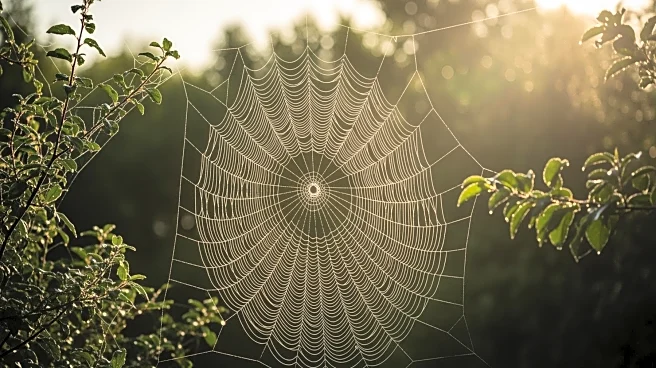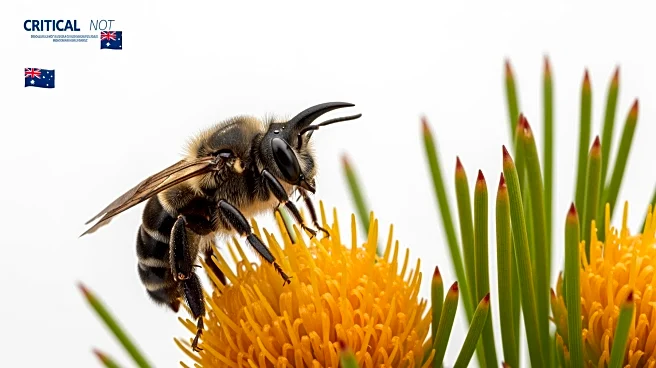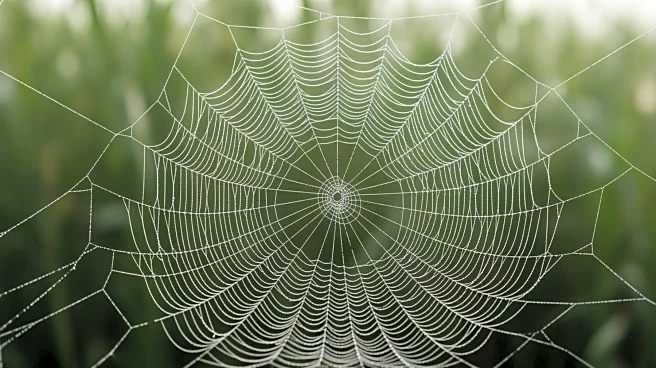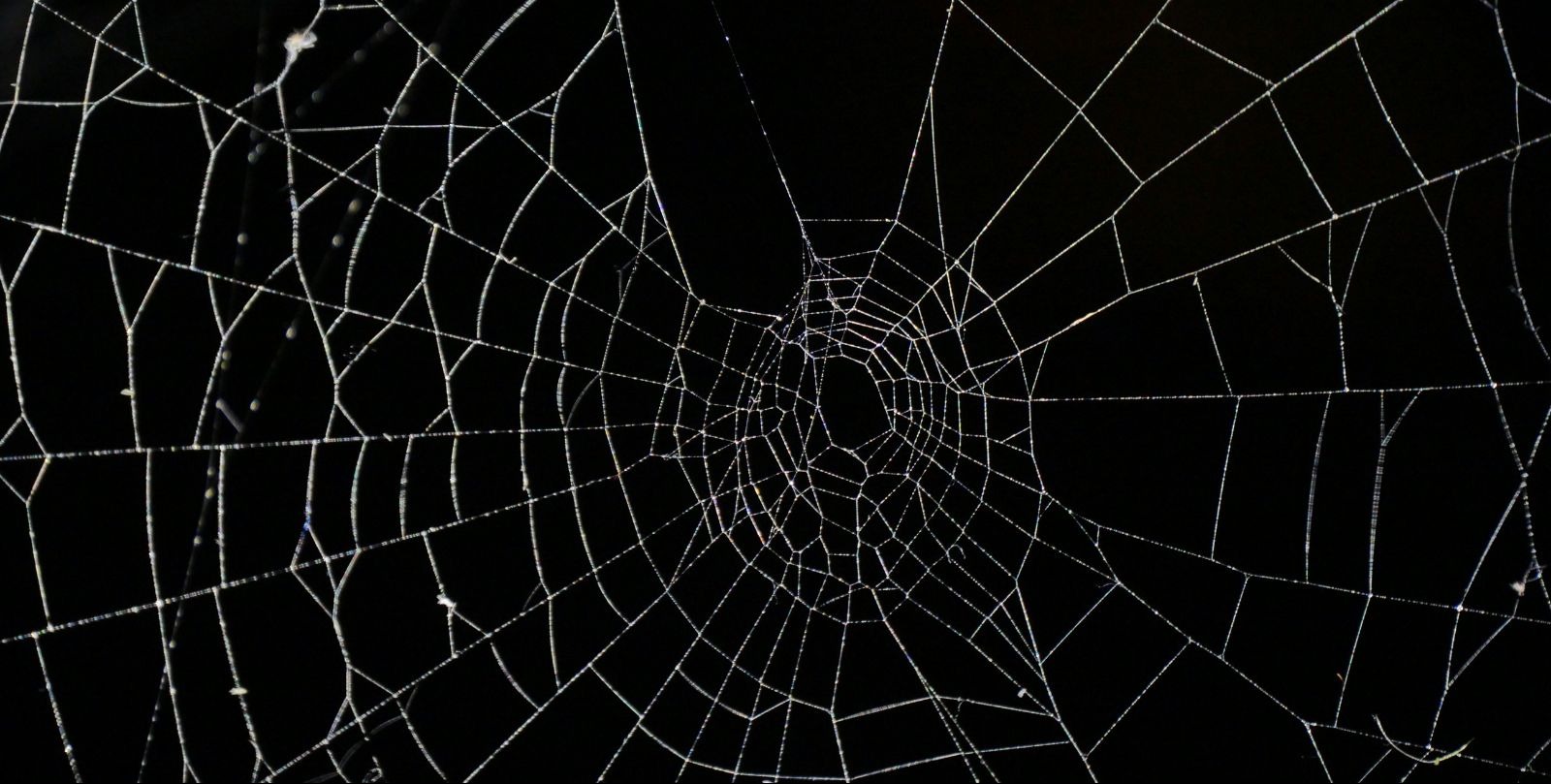What's Happening?
Researchers have discovered what is believed to be the world's largest spider web in a cave on the Albanian-Greek border, housing approximately 110,000 spiders. The web, spanning 1,140 square feet, is home to two different spider species, Tegenaria domestica
and Prinerigone vagans, cohabiting peacefully. This rare occurrence, likened to humans living in apartment blocks, challenges typical spider behavior where larger species often prey on smaller ones. The abundance of midge flies in the cave provides a constant food source, potentially reducing aggression and enabling coexistence.
Why It's Important?
The discovery of this massive spider colony offers new insights into arachnid behavior and evolutionary biology. Understanding how these species coexist peacefully could inform broader ecological studies and contribute to knowledge about species adaptation in unique environments. The findings may also have implications for studying community dynamics and resource sharing among species, providing a model for understanding similar behaviors in other organisms.
What's Next?
Further research is needed to explore the evolutionary mechanisms that allow these spiders to coexist and thrive in such a dense colony. Scientists aim to study the genetic differences between cave-dwelling and surface-dwelling spiders to understand how environmental factors influence species adaptation. The research could lead to broader studies on the impact of environmental changes on species behavior and community dynamics.
Beyond the Headlines
The discovery highlights the importance of preserving unique ecosystems like the Sulfur Cave, which supports diverse species interactions. It also raises questions about the conservation of such habitats, as the cave's location on the Albanian-Greek border presents geopolitical considerations for environmental protection. The study underscores the need for international collaboration in preserving biodiversity and understanding ecological phenomena.















